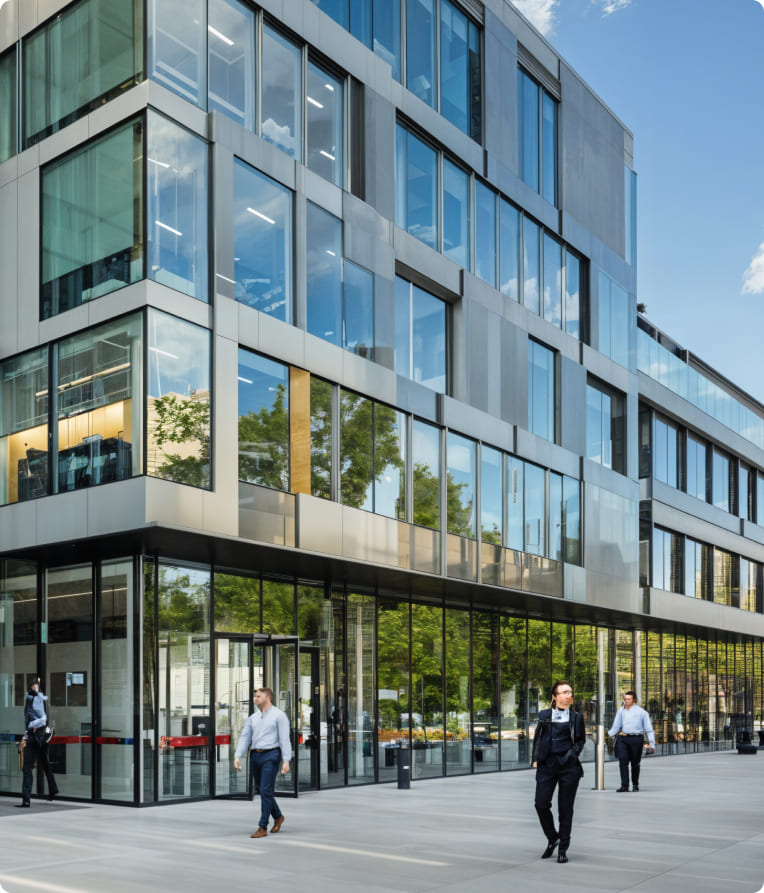Laminated Safety Glass
Laminated glass is a type of safety glass from Thompson Innovative Glass that is made up of two or more layers of glass with an interlayer, typically made of polyvinyl butyral (PVB), ionoplast, or ethylene-vinyl acetate (EVA). This structure holds the glass together if broken, enhancing safety, security, and sound insulation.
Laminated Safety Glass
Laminated glass is a type of safety glass that holds together when shattered and is composed of two or more panes of glass separated by one or more interlayers. The interlayer keeps the layers of glass bonded even when broken, and its high strength and adhesion to the glass surface prevents the glass from breaking up into large, sharp pieces.
Laminated Glass for Safety, Sound, and UV Protection
Thompson Innovative Glass produces laminated glass using advanced lamination and autoclave technology. Beyond strength and safety, laminated glass also offers excellent sound absorption and ultraviolet filtration. Up to 99% UV radiation can be blocked to help protect against fading of interior objects such as artwork and furniture fabrics.
By using the combination of tinted glass and interlayers, Thompson can produce laminated glass that offers a wide range of light transmission, energy efficiency and aesthetic possibilities.

Frequently Asked Questions About Laminated Safety Glass
What is laminated glass?
Laminated glass is a type of safety glass consisting of two or more layers of glass with an interlayer, typically made of polyvinyl butyral (PVB), ionoplast, or ethylene-vinyl acetate (EVA). This structure holds the glass together if broken, enhancing safety, security, and sound insulation.
How is laminated glass made?
Laminated glass is manufactured by sandwiching an interlayer between two glass sheets, then using heat and pressure in an autoclave to bond the layers permanently.
What is the difference between laminated glass and tempered glass?
Laminated glass holds together when broken, reducing the risk of injury and maintaining a barrier.
Tempered glass shatters into small, less harmful pieces upon impact but does not remain intact.
Laminated glass is better for security, sound control, and UV protection, while tempered glass is stronger and more impact-resistant.
Is laminated glass considered safety glass?
Yes! Laminated glass meets safety glass standards (ANSI Z97.1, CPSC 16 CFR 1201, and EN 14449) because it stays intact when broken, reducing the risk of injury.
Does laminated glass reduce noise?
Yes! Laminated glass is excellent for sound insulation, especially when using acoustic PVB interlayers designed for noise reduction. It helps block traffic noise, aircraft noise, and other urban disturbances.
Does laminated glass block UV rays?
Yes, laminated glass blocks 99% of UV radiation, helping to protect furniture, flooring, and artwork from fading due to sun exposure.
Can laminated glass be tinted or decorative?
Yes! Thompson Innovative Glass has several options including colored, frosted, printed, or textured interlayers for aesthetic or privacy applications.